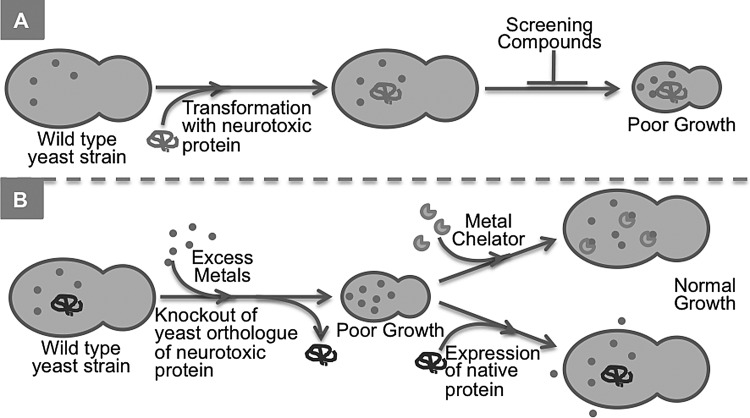FIG. 13.
Schematic describing yeast as model organisms for the study of metal dyshomeostasis in human neurodegenerative disorders. (A) To construct a yeast model of a specific neurodegenerative disease, the disease-associated human gene is overexpressed in yeast and examined for its pathological effects. If expression is toxic to yeast growth, a suppressor screen using chemically synthesized compounds is carried out. Obtained suppressors are further analyzed to understand the underlying mechanism. (B) The yeast orthologue of disease-associated protein is knocked out, and the growth medium is supplemented in various metal ions to assess the effect on growth. Normal growth is restored on incubation with specific rescuing compounds or by restoration of the native protein expression in the knockout strain. PARK9 metal specificity was explored using a similar strategy. Figure adapted from Froschauer et al. (160).

